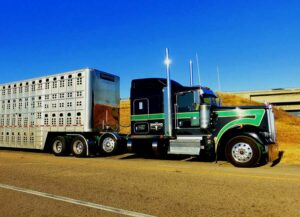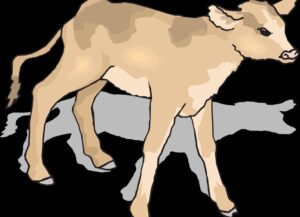Fernando Diaz
Automatic milking is very popular in intensive dairy production systems. The adoption of robotic milking in grazing-based systems is uncommon; however, recent research from New Zealand, Australia, and Ireland is showing that this technology can be implemented in these countries where grazing is a critical part of the production system. Longer distance to the robot makes the cows less motivated to go for milking, therefore, concentrate supply during milking plays a key role for attracting cows.
A study conducted at the Dairygold Research Farm, Animal and Grassland Research and Innovation Centre (Co. Cork, Ireland) evaluated the effect of the amount of concentrate offered on performance, intake and milking activity of early (18.9 days in milk; DIM) and late-lactation cows (207.9 DIM).
Since this was a seasonal calving system, the early lactation period extended from 23 February to 12 April 2015 and the late lactation phase from 31 August to 18 October 2015. The researchers Shortall et al. (2019) compared two feeding strategies:
- A low concentrate supplementation in the robot in which early and late lactation cows were offered 2.3 and 0.4 kg/cow per day, respectively.
- A high-concentrate supply where cows were offered 4.4 and 2.7 kg/cow per day in early and late lactation.
While cows in early lactation were milked 3 times/day, cows in late lactation a milking permission of 2 times/day. In order to ensure that cows milked less than 2 times/day consumed an adequate amount of concentrate, cows received 85% of their daily concentrate during the first milking and the remaining 15% was allocated in the subsequent milkings. Average distance that cows had to walk from the milking robot to a grazing paddocks was 325 metres (range 25 to 650 m).
The researchers indicated that late-lactation cows were less motivated to visit the robotic milking unit than early-lactation cows ((1.4 vs. 1.8 milkings/day). Concentrate supply amount; however, did not affect milking frequency in either lactation phase.
Interestingly, while concentrate level had no significant effect on milk yield in early lactation (22.7 kg/cow), cows offered a high-concentrate level during late lactation produced more milk than cows receiving less concentrate (12.4 and 10.9 kg/cow, respectively). This may have been due to the lower quality of grass consumed by the cow during this period. Compared with the grass grazed during early lactation (spring), grass grazed during the late lactation period (fall) showed lower energy content (1.7 vs. 1.58 Mcal/kg DM).
In conclusion, these results indicate that reducing the allocation of concentrate in the robots does not affect milking frequency. Nevertheless, when grass quality is low, feeding more concentrate may improve milk production as was observed in this study during late lactation.
Reference
Shortall, C. Foley, R. D. Sleator and B. O’Brien. 2019. The effect of concentrate supplementation on milk production and cow traffic in early and late lactation in a pasture-based automatic milking system. Animal. 12: 853–863.
© 2019 Dairy Knowledge Center, LLC. All Rights Reserved.











